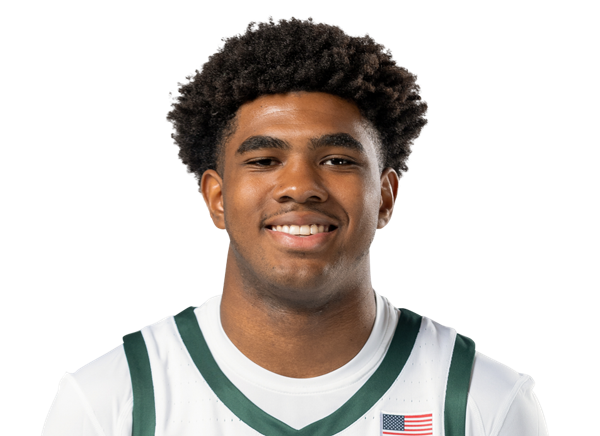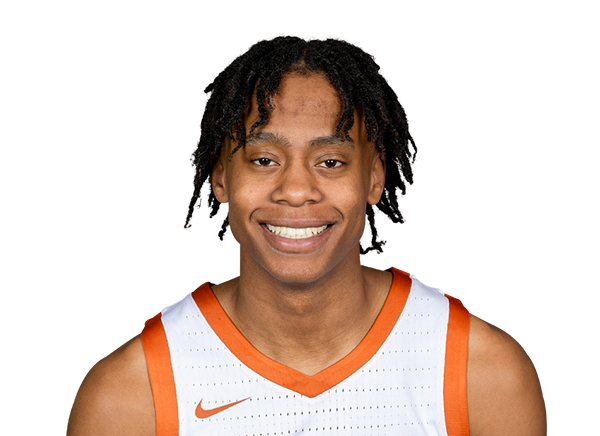Full Analysis
Offense
Kasparas Jakucionis is a dynamic, creative lead guard who plays with advanced pacing and excellent court mapping for his age. A true offensive conductor, Jakucionis excels at stringing together actions, reading defensive rotations, and firing complex passes from live dribbles. His feel for sequencing plays, when to probe, when to hit the roller, and when to shift the defense with a fake, is elite for a freshman. With 6.2 assists per game, his passing vision shines brightest in pick-and-rolls, where he manipulates defenders using tempo shifts and left-handed deception.
Jakucionis doesn’t possess elite burst, but his change-of-pace driving keeps defenders off balance. He’s a slinky ball-handler with a low center of gravity and the strength to finish through contact. At the rim, he converts 71.7%, a testament to his craft and comfort in traffic. He’s also a foul-drawing guard, averaging 4.7 free throw attempts per game, and has been consistently strong from the line (84.5% FT), an encouraging indicator for his shooting upside.
The scoring, though, remains a work in progress. He’s more efficient inside the arc (55.4% on 2s) than from deep, where he shot just 32.7% from three on 4.7 attempts per game. Pre-injury, Jakucionis was hitting over 41% from distance, mixing pull-ups and stepbacks. After a forearm injury midseason, his shooting regressed, likely affecting confidence and follow-through. He doesn’t always elevate with fluidity on pull-ups, and his balance on movement shooting can waver. His jumper is projectable long-term, but inconsistent for now.
The turnover problem is real. He averaged 3.6 turnovers per game and had more giveaways than field goals in 10 different contests. While some of this is due to high usage and experimental passes, too many turnovers stemmed from overdribbling, forcing passes into crowded lanes, and lapses in clock awareness. He sometimes pounds the air out of the ball seemingly in search of the “perfect read,” rather than making quick, simple decisions.
Jakucionis can play both on and off the ball, but his ideal NBA projection leans toward a second-unit initiator or combo guard who can take pressure off a team’s lead creator. He’s smart, unselfish, and adaptable, but he’ll need to tighten his handle and decision-making to be trusted in full-time lead guard duties.
Defense
Defensively, Jakucionis is competitive and fundamentally sound, but limited physically. He lacks quick-twitch lateral movement and doesn’t have the footspeed to consistently contain quicker NBA guards at the point of attack. His 0.6 STL% and 0.6 BLK% are among the lowest in the class for guards, reflecting both a lack of event creation and a conservative defensive style.
While he’s not a defensive liability from a motor or awareness standpoint;he gives effort, fights through screens, and closes out under control, his lack of burst and strength makes him vulnerable against both quick ballhandlers and physical wings. He’s often caught in the in-between: not fast enough to keep smaller guards in front, and not strong enough to wall off slashing 2s or combo forwards.
Jakucionis does make good rotations and generally avoids compounding mistakes. He stays engaged off-ball and understands where he should be. But the margin for error is thin. Without plus athleticism or disruptive instincts, he’ll have to be highly scheme-aware and effortful just to hold his ground.
The hope is that his frame can add muscle and that his defensive positioning and anticipation can be honed to passable levels in a structured team defense. Still, he will likely need to be paired with a strong point-of-attack defender in most lineups.
Looking Ahead
Jakucionis is a high-IQ, ball-dominant European guard in the mold of many who have succeeded by compensating for average physical tools with elite feel and skill. He plays with a cadence and polish that belies his age, and if his shooting stabilizes and turnovers come down, there’s a clear path to a valuable NBA rotation guard: one who can organize a second unit, set the table for teammates, and make timely scoring reads.
But there’s also a downside. Without clear athletic advantages or defensive impact, and with a scoring profile that still hasn’t fully clicked, his role must be tailored. He won’t beat defenders with burst, and if he can’t consistently hit off-the-dribble jumpers or reduce his turnover load, he could be more of a “good in Europe, tough in the NBA” type.
Still, his passing creativity, touch at the rim, and ability to run an offense with nuance are too intriguing to dismiss. He has a very real chance to become a plus backup with some starting potential, especially in systems that value ball movement, spacing, and secondary playmakers.



